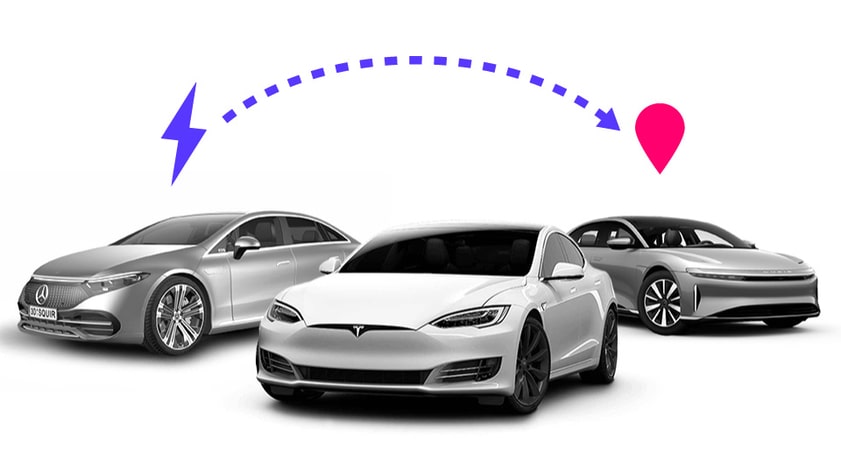The Longest Range Electric Cars in 2021

If gas powers your current car, you know the gut-wrenching sight of a fuel gauge pegged to E and sound of a tank running on fumes, often miles from a gas station. If you’re lucky, a friend may race over with a gas can. You might start asking, “What is better? Electric or gas cars?” For drivers considering electric vehicles (EVs), however, fear of a similar event with worse consequences prompts range anxiety—and right now, the only solution is roadside assistance. That makes EVs with the longest ranges particularly appealing, for those times when you overestimate how far your new car will go before you reach a public charging station or your Enel X Way JuiceBox charger at home.
Most shoppers consider range a critical factor when selecting an EV—or when deciding if they’ll buy one at all. Even with charging stations slowly popping up around the country, it will be eons before they outnumber gas pumps. So, range anxiety is real, as confirmed in the J.D. Power 2021 Electric Vehicle Experience Ownership Study. And range is also the factor most cited in deciding which EV to buy. It’s all about maintaining inner peace.
Determining EV Range
Before an EV ever goes to market, the U.S. Environmental Protection Agency (EPA) calculates its operating range on a single charge. Each EV sits overnight with a fully charged battery. Then a driver cycles through city or highway driving conditions while depleting the battery. Recharging determines the EV’s energy consumption in kilowatt-hours. Your actual mileage may differ due to different driving conditions and styles. But ultimately, the EPA numbers provide the benchmark.
One anomaly that’s initially surprising is that city and highway efficiency are almost always the opposite of what you’d expect from gas-powered vehicles. City driving is actually more efficient. That’s because at low or variable speeds, EVs can recapture energy by slowing the vehicle using the electric motor rather than the brakes.
Highways are where range anxiety comes into play. If you’re driving from Los Angeles to San Francisco, you won’t cover the almost 400 miles and 6-plus hours in most EVs without recharging. On the other hand, you may be able to keep your vehicle running for just as many hours of stop-and-go driving. But weather impacts range too. If you’re heating the cabin, you’re using a lot of power to do it. In fact, Car and Driver found that consumption increased by as much as 35% and killed 60 miles of range in a test of the Tesla Model 3.
Range for 40+ EV Models
So, which electric vehicles boast the longest range? Here’s the list in descending order.
If you’re considering any of these models to be your first electric car, research the complete features and the budget. To help you decide which is your brand new car, you can read car reviews, map out the nearest charging station for each model, read up on the EV range, determine the price range, etc.
Recovery When Your EV Battery Runs Out
With the range available on many EVs today, you should be able to make it to most locations on your daily rounds—and back—without running out of juice. But overestimate your EV battery’s range and you could end up on the side of the road, a long way from anywhere you can charge. That’s bad news: Full discharging the battery will severely stress your battery and shorten its lifespan if it happens often. Your EV will try to warn you and some will even indicate where you can find the nearest charging stations. Ignore these alerts and your EV will gradually slow down, giving you time to find a place to pull over. Then you’ll be calling roadside assistance.
Be sure to let them know you’re driving an EV, because you’ll want a flatbed to carry your vehicle rather than a truck to tow it. Given that most EVs are built low to the ground, towing may damage the vehicle.
Some roadside services carry mobile chargers, portable charging systems that can help EV drivers stuck on the road. These fast chargers will take a short time to juice up your car, then you’re on your way.
Once you get to the nearest public charging station or the Enel X JuiceBox at your home, you can complete the charge and go about your activities, remembering to follow best practices for EV maintenance in the future. You’ll discover that even when the worst happens, it’s no worse in an EV than it is in a gas-powered vehicle.
